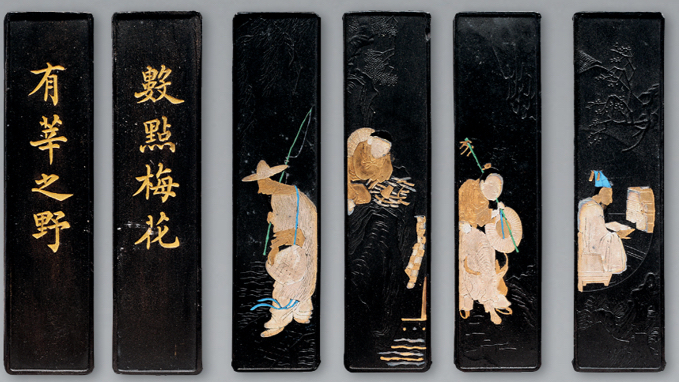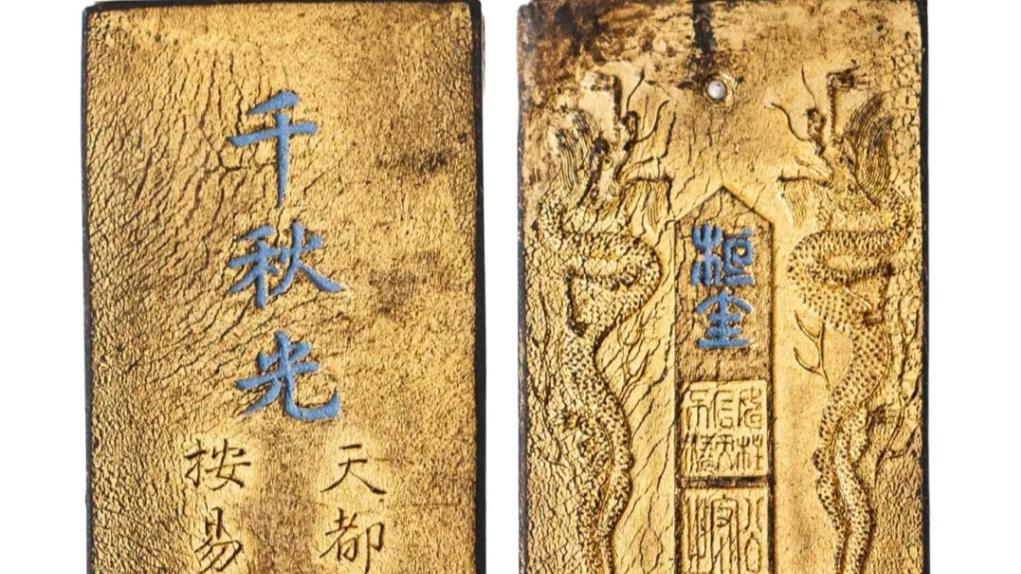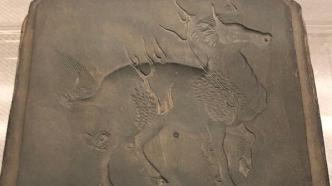

On the afternoon of March 18, the Brush and Ink Palace, located at No. 1300 Jungong Road, Yangpu District, Shanghai, officially opened. Three years ago, when the news that the time-honored brush and ink brand "Cao Sugong" with a history of more than 350 years was about to be relocated, it aroused the concern of people in the literary and art circles.
Since then, "Cao Sugong Ink Factory" bid farewell to the century-old factory building and settled in Yangpu, Shanghai. Today, the gorgeously unveiled Brush and Ink Palace is practicing a series of exploration practices, combining intangible cultural heritage + cultural heritage, intangible cultural heritage + tourism, intangible cultural heritage + research, intangible cultural heritage + cultural creativity, intangible cultural heritage + technology, and created a brand new "National Intangible Cultural Heritage Productive Protection Demonstration Base".
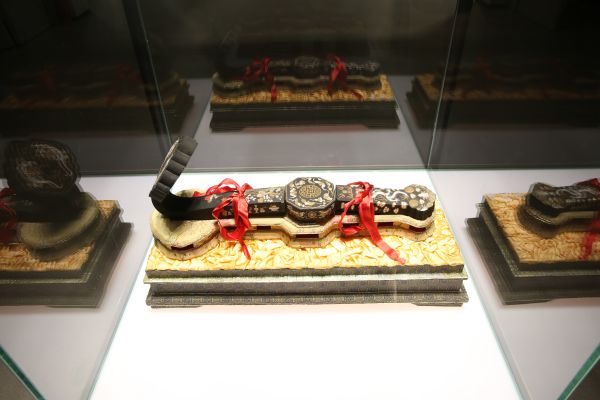
The largest collection of ruyi ink
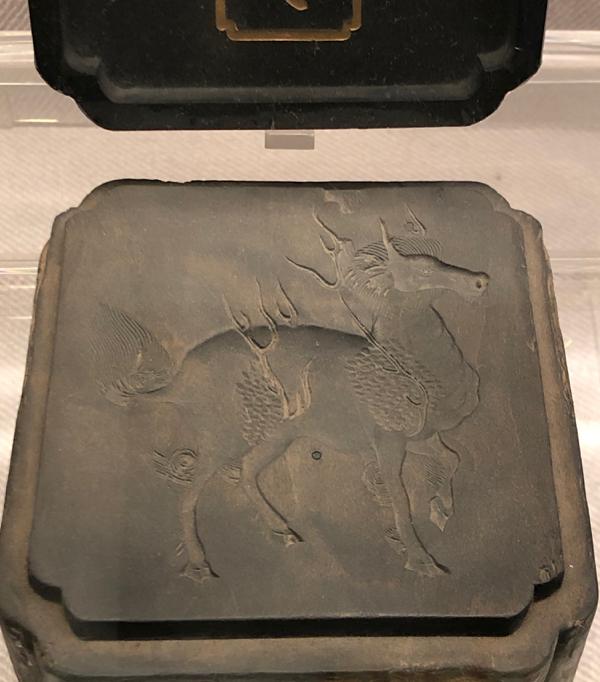
Ink model of Cheng Junfang in Ming Dynasty collected by Cao Sugong
More than 350 years old brand home in Yangpu, Shanghai
Cao Sugong is a well-known brush and ink brand in Shanghai. It was founded in the sixth year of Kangxi in the Qing Dynasty and has a history of more than 350 years. At that time, it had the reputation of "the ink of the world pushes Shezhou, and the ink of Shezhou pushes the Cao family". After the descendants of Cao Sugong brought the inkware for ink making to Shanghai, this ink shop became the famous store of the Four Treasures of the Study in Shanghai, and also became the first choice of Shanghai cultural people. Cao Sugong was used in the works of many Shanghai-style calligraphers and painters, and they also participated in the production of ink. For example, Qian Hui'an, Ren Bonian, Wu Changshuo, Wang Yiting, Guo Moruo and many other calligraphers and painters all made drafts for Cao Sugong's ink making, which continuously improved the artistic level of ink making. It can be said that it has become a symbol of Shanghai-style traditional culture.
However, in the tide of development of the times, Cao Sugong also encountered the problem of old city reconstruction. In 2020, in order to support municipal construction and to cooperate with urban renovation, Nanshan Road, where Shanghai Zhou Huchen Cao Sugong Brush and Ink Company is located, needs to be demolished, and the company is facing a survival dilemma.
With a history of more than 350 years, the news that "Cao Sugong", a time-honored brush and ink brand, is facing relocation has aroused the concern of people in the literary and art circles. At that time, an industry expert said in an interview with The Paper that as the city changes, "Cao Sugong" really needs to be relocated to a more spacious and multi-functional space. Due to the uniqueness of the relocation of national intangible cultural heritage skills, the key lies in "Productive protection", that is, through production, the production skills can be spread, especially the cultivation of inheritors is by no means a three- to five-year effort. Some experts believe that if the consideration is sufficient and thoughtful, the relocation may bring support for traditional culture and a rare development opportunity for time-honored Chinese brands.
Afterwards, thanks to the appeal of the Four Treasures of Study Association of China and the joint proposal of members of the Shanghai CPPCC, the two major brands of Zhou Hucheng and Cao Sugong were finally kept in Shanghai to be well protected and developed.
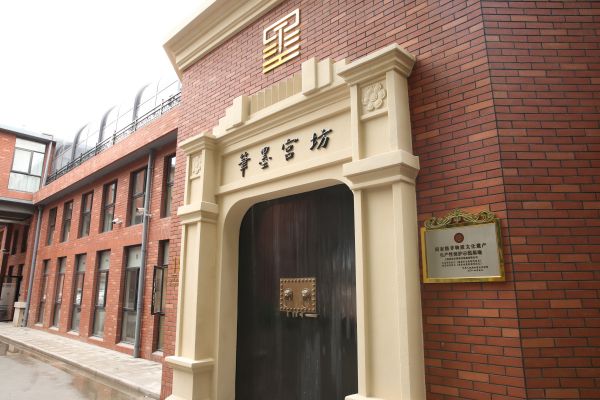
Brush and Ink Palace Square
In 2021, "Cao Sugong Ink Factory" bid farewell to the century-old factory building, moved to Jungong Road as a whole and expanded the exhibition area, integrating hand-made experience and smart display techniques. Today, the officially renamed "Brush and Ink Palace Square" provides better services for tourists who like calligraphy, painting and brush and ink.
"Today we have stepped out of the small manual workshop and started our new journey." Xu Sihao, chairman of Shanghai Zhou Huchen Cao Sugong Brush and Ink Co., Ltd. said, "here we must first do a good job in the integrity and innovation of the national intangible cultural heritage of brush and ink, Make better brushes and inks and continue to meet the growing new needs of calligraphers and painters for brushes and inks. On this basis, we must do a good job in this article on the close combination of intangible cultural heritage production and intangible cultural heritage tourism.”
Appreciate the beauty of intangible cultural heritage skills "face to face"
According to reports, the newly unveiled Brush and Ink Palace Square will be built into a brush and ink cultural aesthetic space integrating five functions of production, tourism, research, cultural creation, and scientific research. Hand Workshop" and "Cultural and Creative Interactive Bar".
Walking slowly along the moving line of the exhibition hall, the production display of the two national intangible cultural heritage skills of "Cao Sugong's Ink Making" and "Zhou Huchen's Brush Making" included in the "Intangible Cultural Heritage Workshop" slowly unfolded like a scroll. Visitors can face-to-face with craftsmen at close range, and intuitively experience important production links such as "lighting cigarettes", "making ink", "turning and drying", "painting gold" and "making pens".
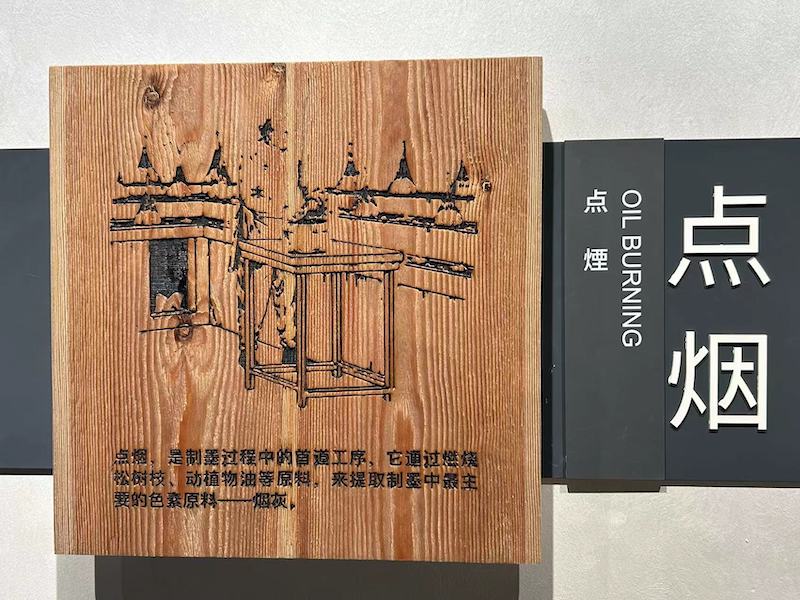
Cigarette lighting in ink making process

ink making
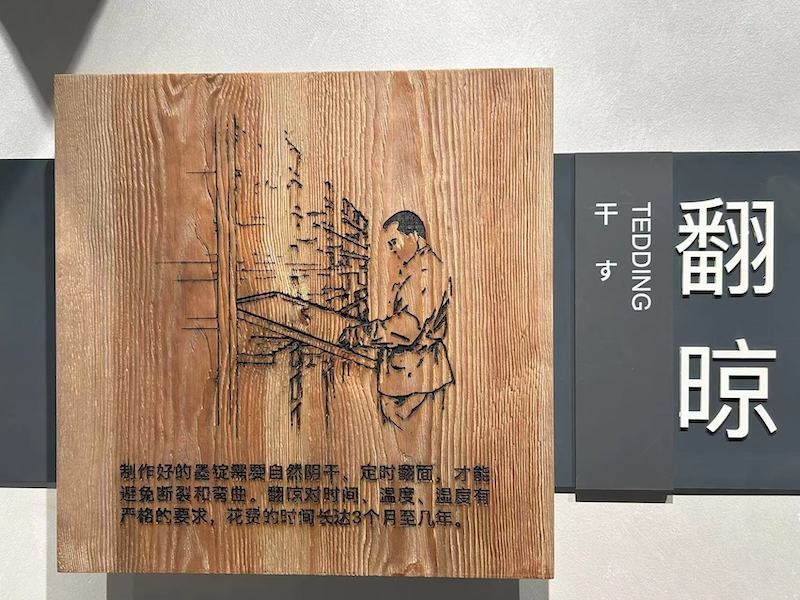
turn over to dry
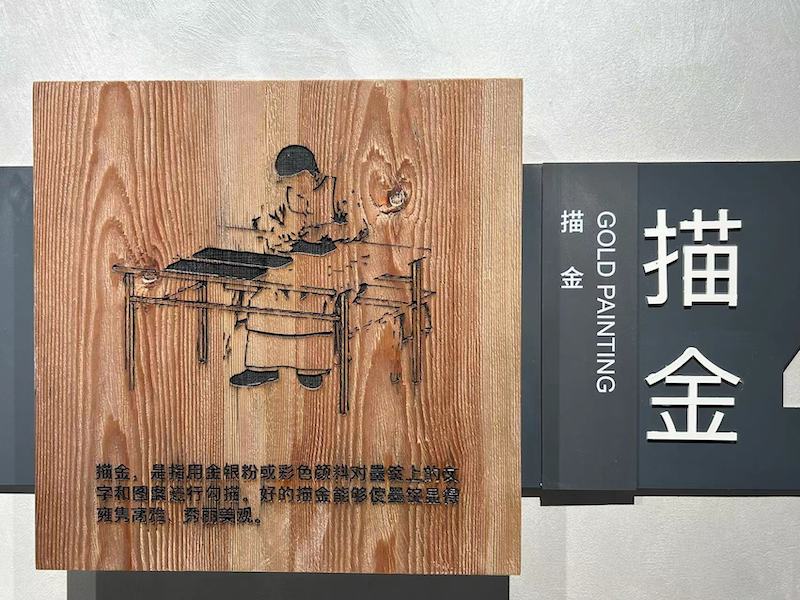
outline in gold
At the cigarette lighting window, if you look inward through the three round windows, you can see hundreds of oil lamps flickering in the dark room, with endless depths. This is the first process of ink making—cigarette lighting. In addition to the display of the raw materials, tools and methods of the ancient tobacco refining method, the "Cao's new rolling tobacco refining method" pioneered by Cao Sugong was also presented.
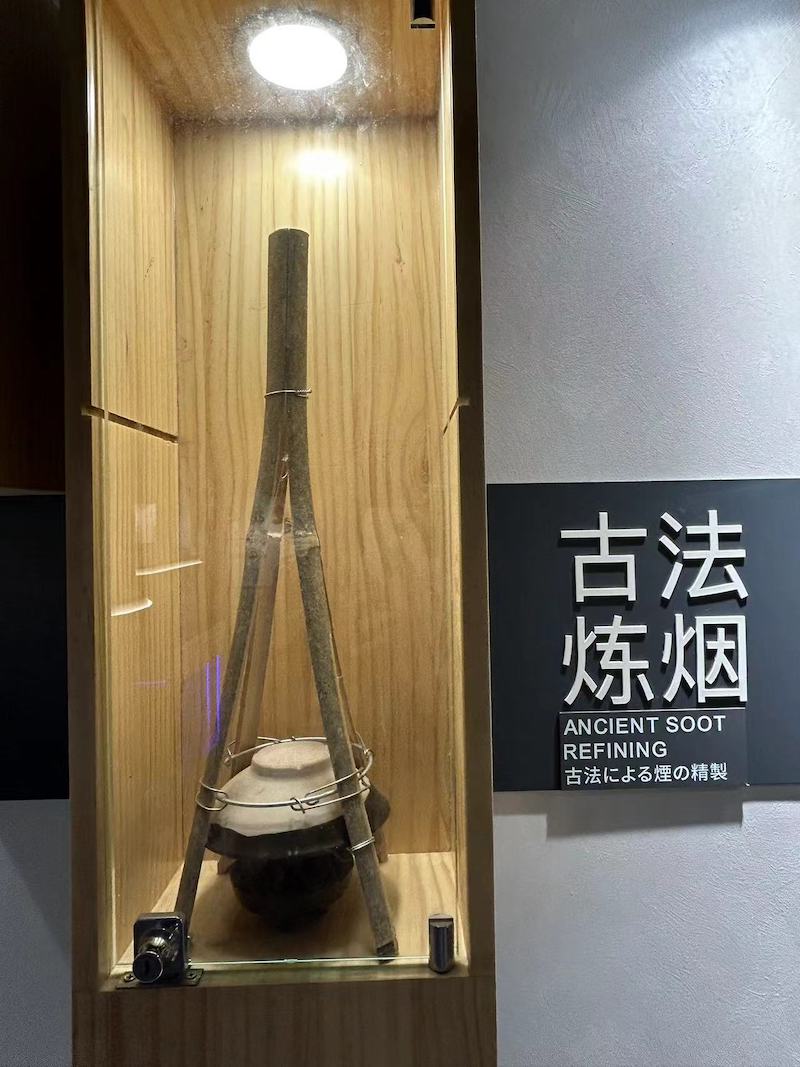
Ancient method of refining tobacco

Pigment raw materials for ink making raw materials

Auxiliary materials for ink making raw materials
In the ink-making window, through a long arc-shaped transparent glass, you can see the raw materials and tools needed for ink-making. Here, non-genetic people demonstrate on the spot "beating ink embryo", "rubbing ink fruit", "injecting ink mold" and "repairing". Ink edge" and a series of ink making operations.

In the ink-making window, non-genetic people demonstrated a series of ink-making operations such as "beating ink embryos", "rubbing ink fruit", "entering ink molds" and "repairing ink edges".
When I came to the drying window and looked inward, I could see that there were neat rows of ink sticks placed on the ink racks, and there were strings of ink sticks that were drying naturally under the roof. The air-drying process "turns over" and "checks up" each batch of ink ingots.

There are strings of ink sticks drying naturally in the drying window
In the gold-painting window, it can be seen that the gold-painting master is concentrating on "brushing ink", "accompanying gold powder", and "painting gold", and the ink ingots become colorful under the pen of the craftsman. Jiang Dongping, a gold-painting artist who is burying her head in tracing gold, told The Paper that she has been engaged in tracing gold for more than ten years. "When tracing, pay attention to tracing into the groove part, try not to trace out. Ordinary ink uses gold powder and silver powder, and superior custom ink needs to use 24K pure gold to trace."

The gold-painting window, the gold-painting master is concentrating on "brushing ink", "accompanying gold powder", and "painting gold"
After experiencing ink-making processes such as "lighting cigarettes", "making ink", "turning and drying", and "painting gold", you can come to the brush-making window to learn about the raw materials, tools and methods needed to make brushes. Experience the difficult process of writing.

Pen craft
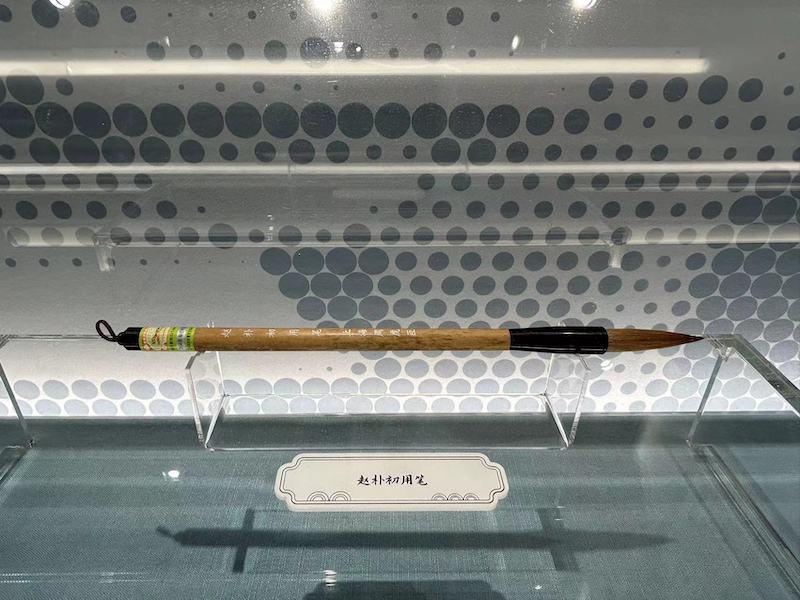
Zhao Puchu with a pen
The brush and ink culture full of traditional charm is returning to the life of modern people in an interesting and rich way in the brush and ink palace square.
"The intangible cultural heritage retains the original state of traditional culture, continues the life memory of the nation, and contains the roots of national culture. The Brush and Ink Palace Square will carry out various experience activities in succession, so that everyone can learn more about intangible cultural heritage and make intangible cultural heritage Handicrafts have been passed down from generation to generation, making intangible cultural heritage more accessible." Xu Sihao said.
Precious database of ink molds and ink ingots
There are also tens of thousands of ink molds that have lasted for more than 400 years since the Wanli year of the Ming Dynasty.

Rescue and arrangement of intangible cultural relics
The "Historical Long Scroll Hall" also exhibits cultural relics such as "Royal Brush and Ink", "Famous Artists' Brush and Ink", "Red Brush and Ink", "Calligraphy and Painting Brush and Ink", as well as the treasures of the town hall, "The Largest Ruyi Ink" and "The Longest Langhao Brush". ".
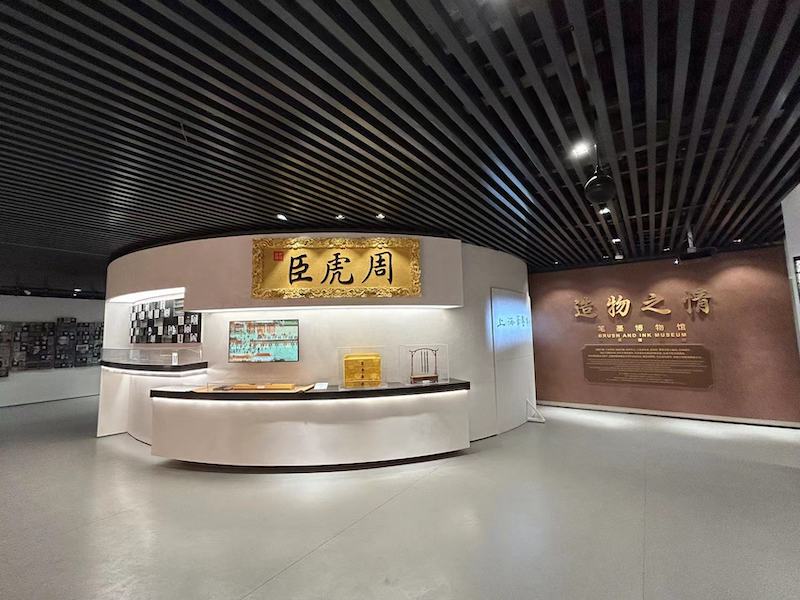
Pen and Ink Museum
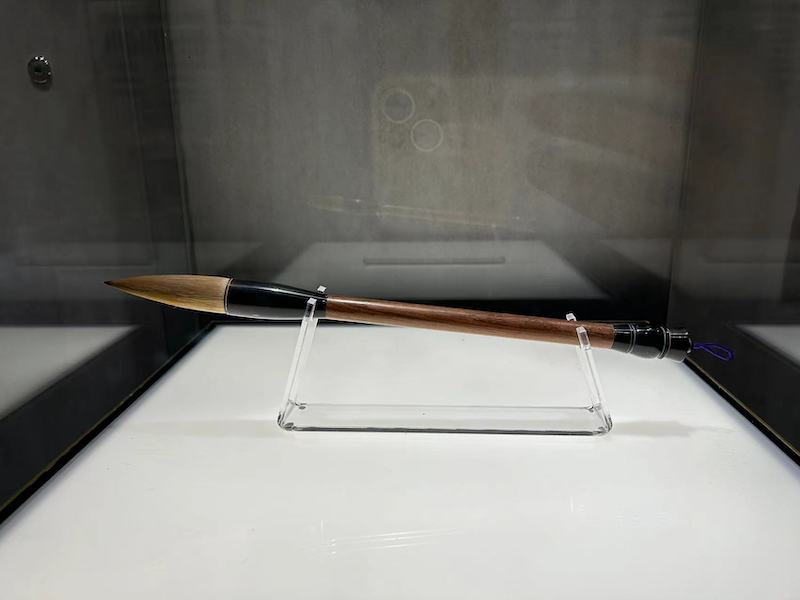
"The Longest Wolf Hair Pen"
Royal Brush and Ink exhibits part of the legacy of the previous dynasty and imperial ink. Cao Sugong was a famous Mohist in the early Qing Dynasty. He inherited the ink-making skills and some precious ink molds of famous Ming Dynasty masters Cheng Junfang, Fang Yulu and Wu Shuda. In addition to the 18 kinds of original ink products, it also continued to produce many classic famous products of the Ming Dynasty. For example, the "Bai Zi Tu" for praying for many children and blessings, the "Bai Jue Tu" for high-ranking officials, the "Nine Sons of the Dragon" for hoping that their children will become a dragon, the "Nanji Jianze" for congratulations on longevity, and the "Zou Yu" for benevolent beasts, etc., are all used in the late Ming Dynasty. Made of ink molds. These ink molds are still preserved in the Cao Sugong Ink Factory, and they are all very precious national treasures.

Ink Set of Thirty-Six Peaks of Mount Huangshan (detail)
Gojimok is ink made with the title of emperor's inscription or imperial poem. The ink surface is engraved with imperial poems, the ink back is engraved with exquisite patterns, and the imperial seal is also engraved, which is very royal and imperial. It can be presented as tribute ink to the court and sold in the market. It is very popular and the Mohists have gained both fame and fortune. After the founding of Cao's ink shop, the ink of "Huangshan Map" was awarded "Purple Jade Light" by the emperor. It is famous for making imperial ink and tribute ink, and it is the founder of imperial ink. The Imperial Farming and Weaving Tumo, Mingyuan Tumo (commonly known as Yuyuan Tumo), and Sixteen Arhat ink were all created by him.
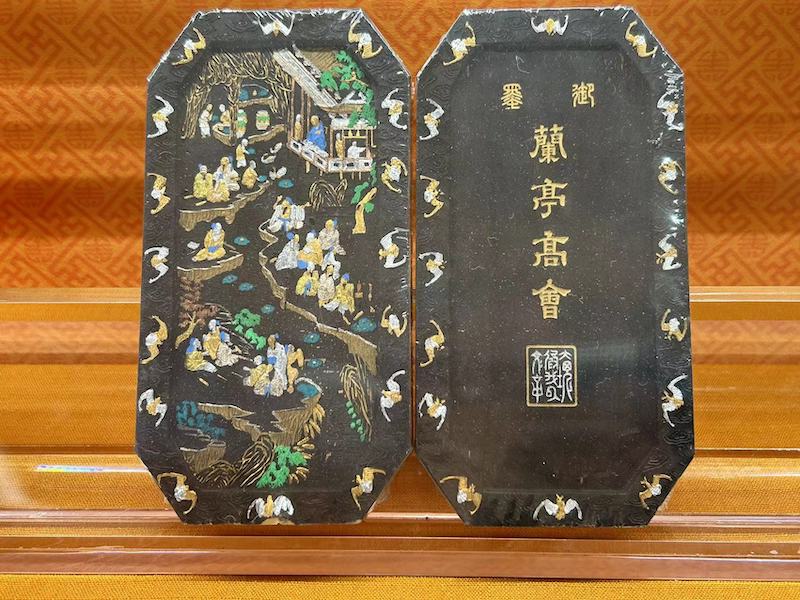
During the reign of Emperor Qianlong, the seal script "Yu Mo" on the top and the official script "Lanting Gaohui" in the middle.

Yumo
Shanghai school calligraphers and painters are also fans of Cao Sugong's ink, and they also directly participated in the design and production of ink. For example, Qian Hui'an, Ren Bonian, Wu Changshuo, Wang Yiting, Guo Moruo and many other calligraphers and painters all made drafts for Cao Sugong's ink making, which continuously improved the artistic level of ink making. It also preserves and displays the precious ink ingots that Cao Sugong once customized for the masters of Shanghai School of Calligraphy and Painting.
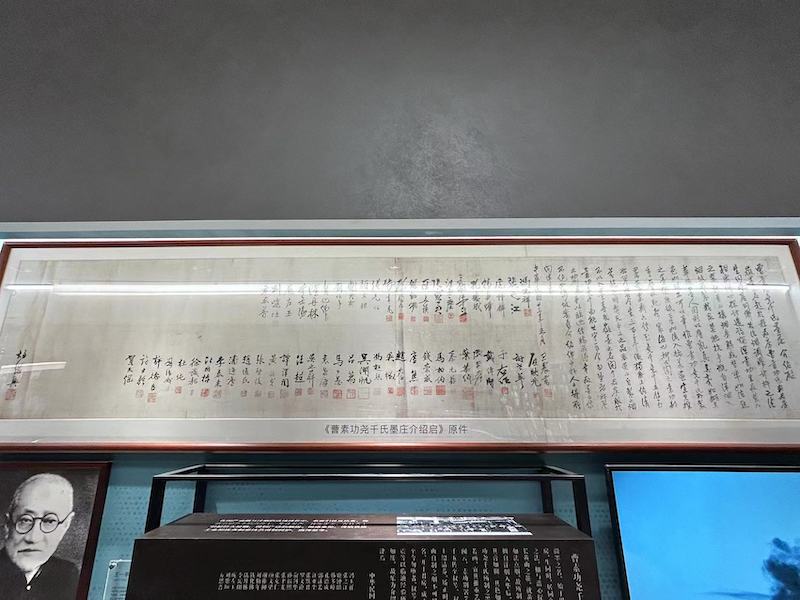
Original Price
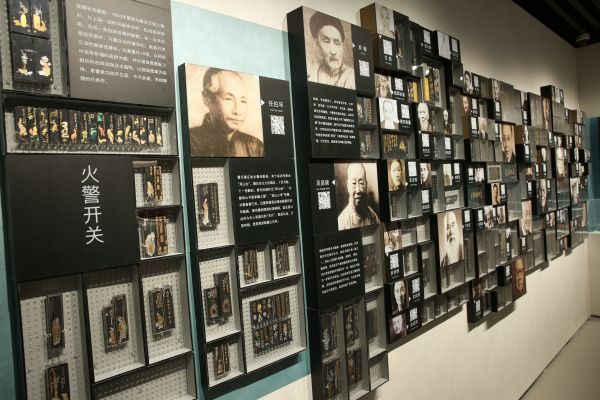
Mo Hai

Xiling Yinshe Custom Ink
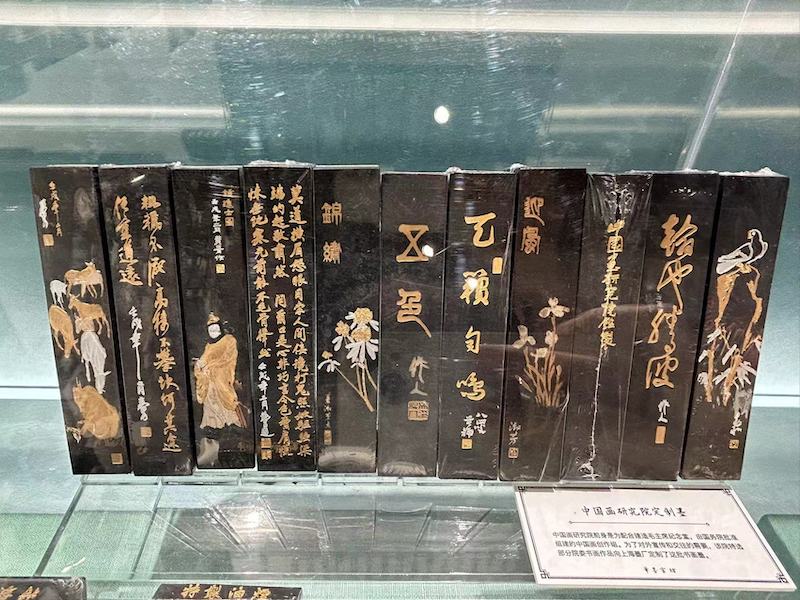
Chinese painting researcher custom ink
